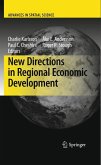This book offers practical and theoretical insights in regional externalities. Regional externalities are a specific subset of externalities that can be defined as externalities where space plays a dominant role. The book offers examples of this class of externalities that can be divided into three categories: (1) externalities related to mobility and transport; (2) external economies of scale and cluster effects, and (3) spatial environmental externalities.
Dieser Download kann aus rechtlichen Gründen nur mit Rechnungsadresse in A, B, BG, CY, CZ, D, DK, EW, E, FIN, F, GR, HR, H, IRL, I, LT, L, LR, M, NL, PL, P, R, S, SLO, SK ausgeliefert werden.









